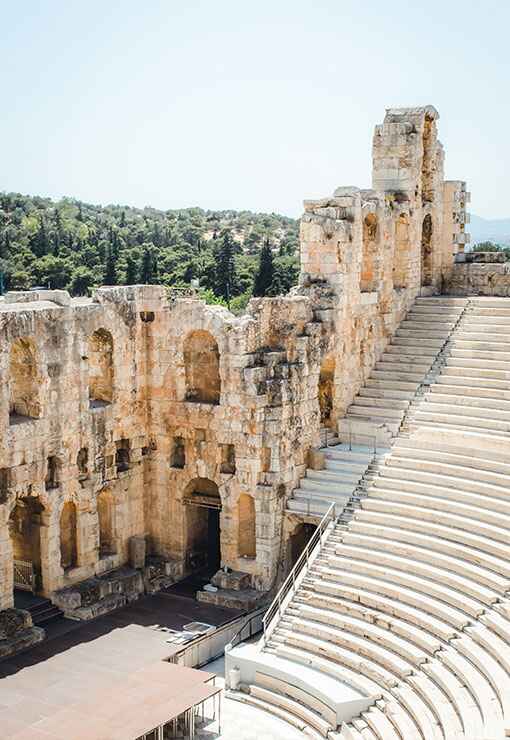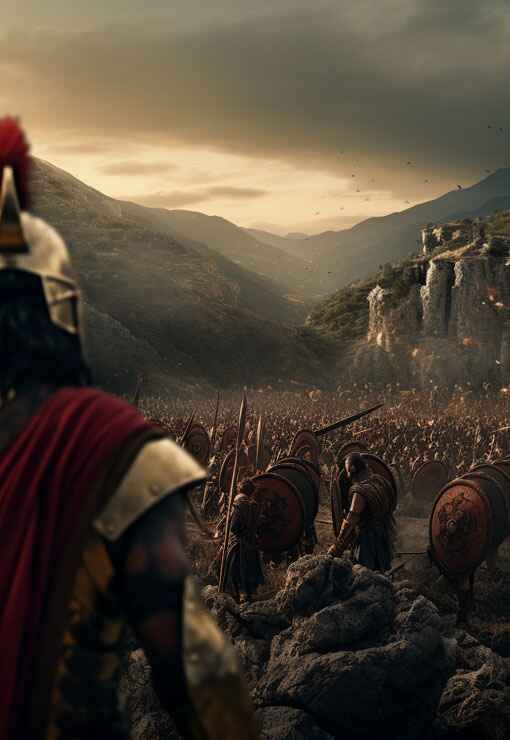

The Mycenaean civilisation, which emerged on the Greek mainland during the Late Bronze Age (circa 1600–1100 BCE), represents a significant era in Ancient Greek history. Here is an overview of the Mycenaean civilisation:
Fortified Palatial Centres: Mycenaean civilisation was characterised by the construction of fortified palatial centres, including Mycenae, Tiryns, and Pylos. These palaces served as political, administrative, and economic hubs.
Linear B Script: The Mycenaeans developed a script known as Linear B for administrative and economic purposes. Deciphered in the 20th century, Linear B inscriptions provide valuable insights into Mycenaean society, including records of goods and commodities.
Architecture and Engineering: Mycenaean architecture exhibited advanced engineering, with massive cyclopean walls and monumental gateways defining their palaces. The famous Lion Gate at Mycenae is an exemplary representation of Mycenaean architectural prowess.
Mycenaean Art: Mycenaean art was influenced by Minoan art, but it also had its distinctive features. Goldsmithing, pottery, and frescoes adorned the palaces, showcasing both artistic skill and cultural significance.
Mycenaean Trade and Influence: Mycenaeans engaged in extensive trade networks, interacting with other civilizations such as the Minoans, Egyptians, and Hittites. These interactions contributed to the cultural and economic prosperity of the Mycenaean civilization.
Tholos Tombs: Mycenaean elite were buried in tholos tombs, also known as beehive tombs, which featured a circular burial chamber with a corbelled dome. The most famous example is the Treasury of Atreus at Mycenae.
Mycenaean Religion: Mycenaean religion was polytheistic, with deities such as Zeus, Hera, and Poseidon playing prominent roles. Religious practices included rituals, sacrifices, and ceremonies, often conducted in sacred spaces within palatial complexes.
Mycenaean Decline and the Collapse: Around 1200 BCE, the Mycenaean civilization faced a period of decline and upheaval. The reasons for this collapse are still debated but may include a combination of factors such as internal strife, external invasions, and natural disasters.
Epic Poetry and Homer: The Mycenaean period is traditionally associated with the events of the Trojan War, as narrated in the epic poems the Iliad and the Odyssey, attributed to Homer. These epics provide literary insights into the Mycenaean world.
The Mycenaean civilisation, with its fortified palaces, engineering achievements, and cultural interactions, played a crucial role in shaping the trajectory of Ancient Greek history. The legacy of the Mycenaeans is preserved in both archaeological remains and the literary traditions of later Greek societies.
| Start Date | 1600 BC |
|---|---|
| End Date | 1100 BC |

In the Mycenaean era of ancient Greece, the deciphered Linear B script revealed administrative records, showcasing a sophisticated society with an economy based on agriculture, including detailed accounts of commodities like wheat, olive oil, and livestock.
Ancient Greek art and architecture, with its harmonious proportions and timeless elegance, continue to inspire awe and admiration millennia later.
Discover
Greek mythology, a rich tapestry of gods, heroes, and mythical creatures, captivates the imagination with its tales of love, betrayal, and epic adventures that delve into the depths of the human psyche.
Discover
Ancient Greek history, marked by remarkable achievements in democracy, philosophy, and warfare, shaped the foundation of Western civilization, leaving an indelible legacy of innovation and cultural influence that continues to resonate to this day.
Discover
The ancient Greek Olympics, held in Olympia every four years, celebrated athleticism, unity, and cultural pride, serving as a testament to the enduring spirit of competition and excellence that transcends time and borders.
Discover
Ancient Greek wars, such as the Persian Wars and the Peloponnesian War, were pivotal conflicts that shaped the course of history, highlighting the struggle for power, independence, and the clash of civilizations in the ancient Mediterranean world.
Discover
Ancient Greek culture and society, characterized by its emphasis on art, philosophy, and civic engagement, fostered a vibrant intellectual and social landscape where innovation flourished, democracy thrived, and the pursuit of knowledge and excellence was celebrated as fundamental values of civilized life.
Discover
Find out more about ancientgreece.com